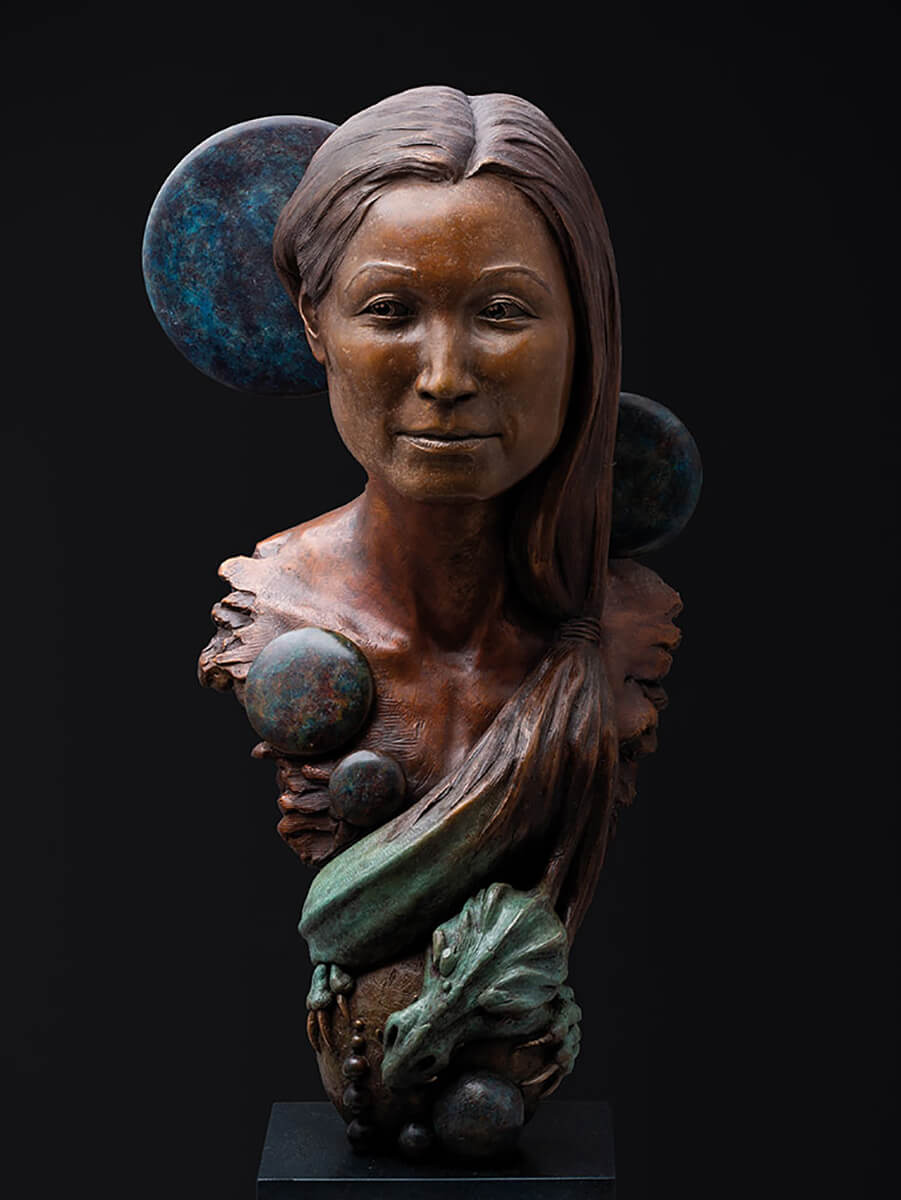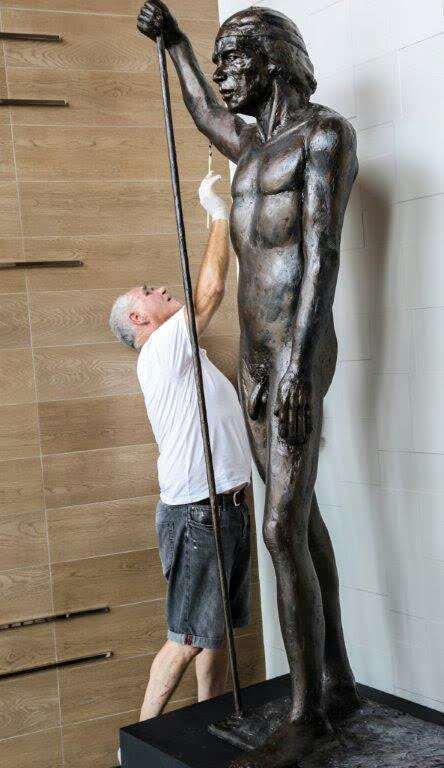Crafting Expressions: The Unique Artistry of a Portrait Sculptor
Wiki Article
Shaping the Human Kind: Representations of the Body in Sculpture
Forming the Human Kind: Representations of the Body in Sculpture is a thorough expedition of the imaginative depiction of the body throughout background. This event explores the different methods, designs, and cultural point of views that have shaped the way musicians have actually represented the human kind in sculpture. From the charming marble sculptures of old Greece to the complex work of arts of the Renaissance, from the elaborate and flamboyant Baroque and Rococo sculptures to the avant-garde and abstract expressions of modern and modern sculpture, this event uses a fascinating journey through the evolution of this classic art type - Bronze Sculptures. By checking out the diverse interpretations and representations of the body, visitors will get a much deeper understanding of the creative, social, and social influences that have shaped our assumption of the human kind.Old Greek Sculptures

One of the defining characteristics of Old Greek sculptures is their focus on balance. Each part of the body is thoroughly crafted to be symmetrical to the whole, producing a sense of balance and consistency. The artists paid careful interest to every information, from the positioning of muscle mass to the positioning of arm or legs, making certain that each number showed up both effective and elegant.
The Greeks additionally valued the concept of idyllic beauty. As opposed to depicting the imperfections and flaws of the human form, they sought to develop an idyllic variation of truth. The sculptures usually represented gods, sirens, and professional athletes, with their bodies formed to excellence. Figurative Sculptures. This idyllic portrayal of the human kind not just well known physical elegance but likewise functioned as a means of inspiring and boosting the visitor.
Renaissance Masterpieces
Continuing the exploration of the portrayal of the human type in sculpture, Renaissance masterpieces additionally improve the idyllic idea of beauty, building upon the in proportion and harmonious proportions of their Ancient Greek predecessors. During the Renaissance period, which spanned from the 14th to the 17th century in Europe, artists sought to revive the classical ideals of ancient Greece and Rome. They studied and imitated the jobs of the old masters, pursuing a practical depiction of the body.
His masterpiece, the sculpture of David, exemplifies the excellence and poise that came to be associated with Renaissance art. Standing at over 17 feet high, the sculpture portrays the biblical hero in a state of tranquility prior to his battle with Goliath.
Another notable Renaissance artist was Donatello. His sculpture of Saint George, produced in the early 15th century, showcases the musician's capability to convey toughness and the aristocracy through the human kind. The sculpture portrays the legendary dragon-slaying saint in a positioned and confident position, emanating a sense of heroism.
Renaissance work of arts not only celebrated the physical appeal of the human body yet likewise shared deeper meanings and feelings. Through their thorough interest to information and proficient craftsmanship, Renaissance carvers elevated the art of sculpture to brand-new heights, leaving an enduring legacy that proceeds to inspire artists to now.
Baroque and Rococo Sculpture
Rococo and baroque sculpture exemplifies the luxuriant and lavish representation of the human form throughout the 17th and 18th centuries. Characterized by its remarkable and vibrant design, Baroque sculpture aimed to mesmerize visitors through its magnificence and psychological intensity. Artists such as Gian Lorenzo Bernini and Alessandro Algardi produced sculptures that shared movement, commonly depicting figures in remarkable postures. Making use of light and shadow additionally boosted the sense of drama, producing a staged result.
Rococo sculpture, on the various other hand, emerged as a reaction to the grandiosity of the Baroque period. They often represented numbers in stylish and sensual presents, showing the lighthearted and wayward nature of the Rococo design.
Both Baroque and Rococo sculpture placed a fantastic emphasis on the human kind, celebrating its beauty and sharing a series of emotions - Contemporary Sculptures. Whether it was the effective and dynamic numbers of the Baroque or the stylish and enchanting numbers of the Rococo, these sculptures caught the essence of the human experience, leaving a long-term effect on the art world
Modern and Contemporary Sculpture
The advancement of shaping the human form proceeds in modern and modern sculpture. With the development of new products and techniques, musicians have actually pressed the limits of depiction, testing typical ideas of kind and elegance. Modern sculpture arised in the late 19th century as a reaction to the transforming social and political landscape. Musicians such as Auguste Rodin and Constantin Brancusi looked for to catch the significance of the human type, highlighting feeling and motion. Rodin's "The Thinker" and Brancusi's "Bird in Area" are renowned examples of this period.In the 20th century, the rise of abstraction and conceptual art brought brand-new opportunities for artists. Artists like Henry Moore and Barbara Hepworth checked out the connection in between kind and room, creating organic and abstracted figures that tested typical ideas of depiction. Moore's monumental bronze sculptures and Hepworth's carved stone works are celebrated for their ingenious use products and their capability to stimulate a feeling of the body in a non-literal means.
Contemporary sculpture proceeds to press the borders of depiction and discover brand-new products and strategies. Musicians like Antony Gormley and Ron Mueck develop hyper-realistic sculptures that test our assumption of the body, while others, such as Louise Bourgeois and Kiki Smith, make use of the body as an allegory for collective and personal experiences. The human form remains a powerful topic in sculpture, giving a system for musicians to discover identification, emotion, and the human condition.
Cultural Perspectives on the Body

In the expedition of shaping the human form, the exam of social point of views on the human body discloses a rich and diverse tapestry of interpretations and depictions. Throughout background, different societies have actually held distinct ideas and values concerning the human body, causing unique artistic expressions - Equine Sculptures. These social viewpoints form the means the human body is portrayed and viewed in sculpture, reflecting societal norms, faiths, and aesthetic suitables
For instance, ancient Greek sculptures celebrated the idyllic human kind, highlighting physical charm and athleticism. In contrast, ancient Egyptian sculptures concentrated on the conservation of the body in the afterlife, depicting numbers with idyllic functions and rigid postures.
In a similar way, social point of views on the human body in African art often stress common identity and spiritual ideas (Contemporary Sculptures). Sculptures from different African cultures show the human body with exaggerated attributes, representing ancestral links and cultural worths. Native cultures in the Americas also have unique perspectives on the human body, usually illustrating it in a spiritual context and stressing the link between human beings and nature
The evaluation of cultural perspectives on the human body in sculpture permits us to get insight right into the worths, ideas, and aesthetic appeals of different cultures throughout background. It highlights the variety of human experiences and the methods which art reflects and forms our understanding of the human form.

Final Thought
To conclude, the representation of the body in sculpture has developed over time, showing different cultural viewpoints and creative movements. From the idealized numbers of Old Greek sculptures to the stirring and practical Renaissance work of arts, and the intricate information of Baroque and Rococo sculptures, to the abstract and experimental kinds of modern and contemporary sculpture. The body has actually been a topic of fascination and imaginative expedition throughout background, showcasing the diverse analyses and expressions of the human form.Forming the Human Form: Portrayals of the Body in Sculpture is a comprehensive exploration of the creative depiction of the human body throughout background. From the beautiful marble sculptures of old Greece to the elaborate work of arts of the company website Renaissance, from the flamboyant and ornate Baroque and Rococo sculptures to the progressive and abstract expressions of modern and modern sculpture, this exhibition provides a fascinating journey through the evolution of this timeless art form. Artists like Antony Gormley and Ron Mueck develop hyper-realistic sculptures that challenge our perception of the human body, while others, such as Louise Bourgeois and Kiki Smith, make use of the body as a metaphor for cumulative and individual experiences. The human form remains an effective topic in sculpture, giving a platform for musicians to check out identification, emotion, and the human problem.
From the idealized figures of Old Greek sculptures to the realistic and emotive Renaissance masterpieces, and the detailed information of Baroque and Rococo sculptures, to the abstract and experimental kinds of modern-day and contemporary sculpture.
Report this wiki page